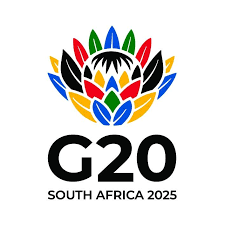
Mohamed Garba
The G20 foreign ministers’ meeting commenced today in Johannesburg, South Africa, notably without the presence of U.S. Secretary of State Marco Rubio. Rubio’s decision to forgo the summit underscores escalating diplomatic tensions between the United States and South Africa.
Rubio announced his absence earlier this month, criticizing South Africa’s policies as “anti-American.” He specifically pointed to the nation’s land reform initiatives and its emphasis on “solidarity, equality, and sustainability”—principles he equated to diversity, equity, inclusion (DEI), and climate change agendas. In a statement, Rubio asserted, “My job is to advance America’s national interests, not waste taxpayer money or coddle anti-Americanism.”
The diplomatic strain intensified following President Donald Trump’s executive order halting U.S. aid to South Africa. The order was a response to South Africa’s land expropriation law, which the Trump administration contends discriminates against the white minority. Additionally, South Africa’s legal challenge against Israel at the International Court of Justice has further strained relations.
Despite the U.S. absence, the summit proceeds with participation from other global powers, including Russia and China. South African Foreign Minister Ronald Lamola addressed the situation, emphasizing that Rubio’s decision does not equate to a complete U.S. boycott of the G20 proceedings.
Lamola reiterated South Africa’s commitment to its G20 presidency themes, focusing on addressing global inequalities and promoting sustainable development. The G20 meeting aims to tackle pressing global issues such as trade disputes, the ongoing conflict in Ukraine, and the economic impacts of climate change. However, the conspicuous absence of the United States raises questions about the effectiveness of multilateral efforts in addressing these challenges.
As the summit progresses, the international community will closely monitor how this diplomatic rift influences both the outcomes of the G20 discussions and the broader geopolitical landscape.
